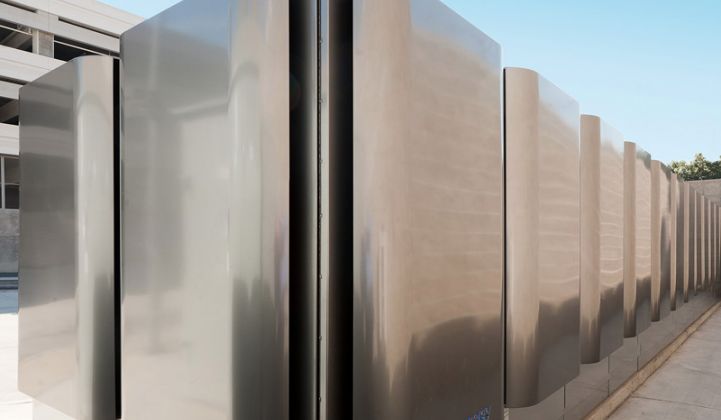Bloom Energy is reported to be putting its plans for an initial public offering back in motion, giving the Silicon Valley startup with about $2 billion in debt and equity another chance to lift its investors’ hopes.
According to a report from the Wall Street Journal citing unnamed sources, the Sunnyvale, Calif.-based company may be planning an IPO as early as May. The decision was driven by last month’s renewal of federal tax credits, similar to those given to solar and wind power systems, that were lost to fuel cells when they were left out of a broader reauthorization in 2015.
The loss of this tax credit had pushed Bloom Energy to a loss of about $100 million on roughly $450 million to $500 million in revenue, the WSJ reported. But with the credit restored, the company expects a profitable year and a significant bump in revenue in 2018, according to one source.
This isn’t the first time Bloom has claimed it was closing in toward profitability in the midst of IPO rumors. But the company, which made a big splash with its media debut in 2010 and was valued by private investors at $2.9 billion in 2011, became very tight-lipped about its financials after 2012.
That’s when Fortune’s Dan Primack reported on leaked internal 2013 projections that showed continuing losses, despite CFO Bill Kurtz’s promise of upcoming profitability. The documents also showed the company's retained earnings stood at negative $873 million.
“I'll be very interested to see Bloom's financials,” Primack, now at Axios, wrote of the WSJ’s report on Wednesday. “After I reported them back in 2012, based on a leaked document, the company stopped providing regular reports to most of its investors.”
Bloom last planned to go public under a confidential IPO filed in September 2016. But this offered little information, beyond the fact that Bloom’s revenues were less than $1 billion a year, as it's required to file confidentially under the federal Jumpstart Our Business Startups (JOBS) Act.
The company had raised just shy of $1.1 billion as of 2013. Its most high-profile investor is Kleiner Perkins Caufield Byers, which took its first stake in 2002, six years before the company shipped its first Bloom Boxes to its first customer and fellow KPCB portfolio company, Google. Other investors include New Enterprise Associates, Goldman Sachs, Credit Suisse Group, Morgan Stanley, GSV Capital, Apex Venture Partners, Mobius Venture Capital, Madrone Capital and SunBridge Partners.
Bloom Energy has deployed most of its fuel cells in California, where the state’s Self-Generation Incentive Program helped cover a large portion of the upfront cost of its fuel cells along with batteries, thermal energy storage and other distributed energy resources.
Bloom raised $50 million from the New Zealand Superannuation Fund in 2014 and another $130 million from unnamed sources in 2015. Meanwhile, Bloom was lining up financing with some of its big utility clients, including Exelon in 2014, and its subsidiary Constellation Energy, and Southern Company subsidiary Power Secure in 2016. In August, those partners announced a 37-megawatt deal with data center operator Equinix, becoming the country’s largest fuel cell deployment to date.
The previous record-holder, Bloom’s 30-megawatt project for Delmarva Public Service, a subsidiary of Exelon utility Pepco, has had a mixed track record. Public opposition emerged over the solid-oxide fuel cell’s potential for contaminating nearby areas with sulfur-tainted byproducts, as well as concerns over the cost of the power delivered.
This week’s news could lead to more clarity on Bloom Energy’s financial pathway toward profitability. But it has yet to disprove the maxim of Greentech Media's former editor-in-chief Eric Wesoff that the number of profitable pure-play fuel cell companies remains, at least for now, zero.




